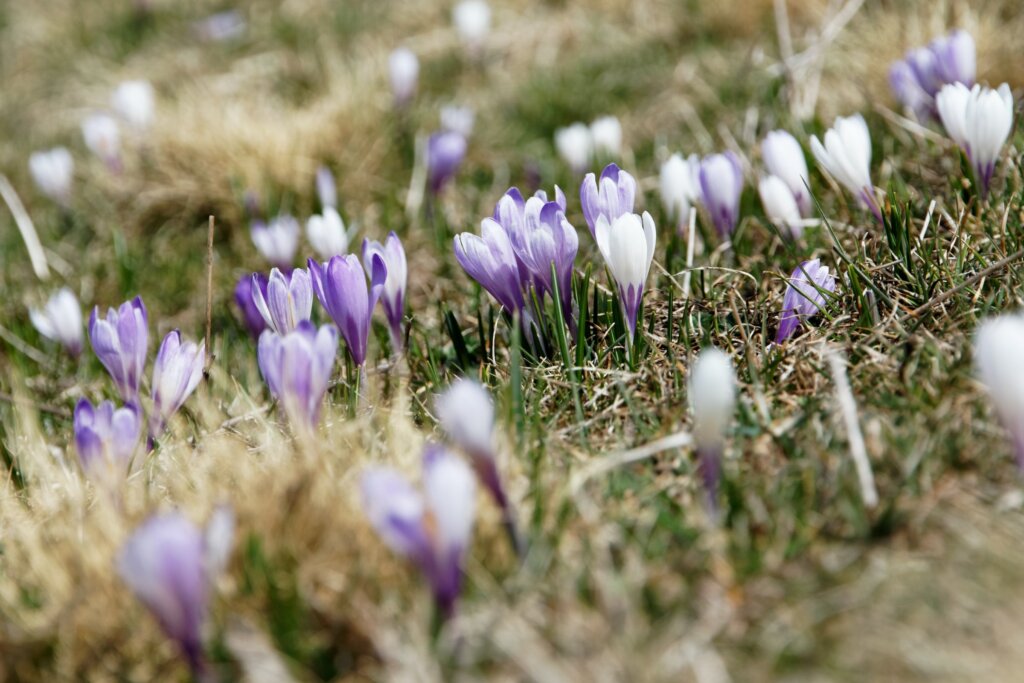The first warm days announce it. Hibernation is over and spring is just around the corner. Tulips, snowdrops, and crocuses herald the new gardening season. To make sure you and your garden are ready, we have put together a few tips for you.
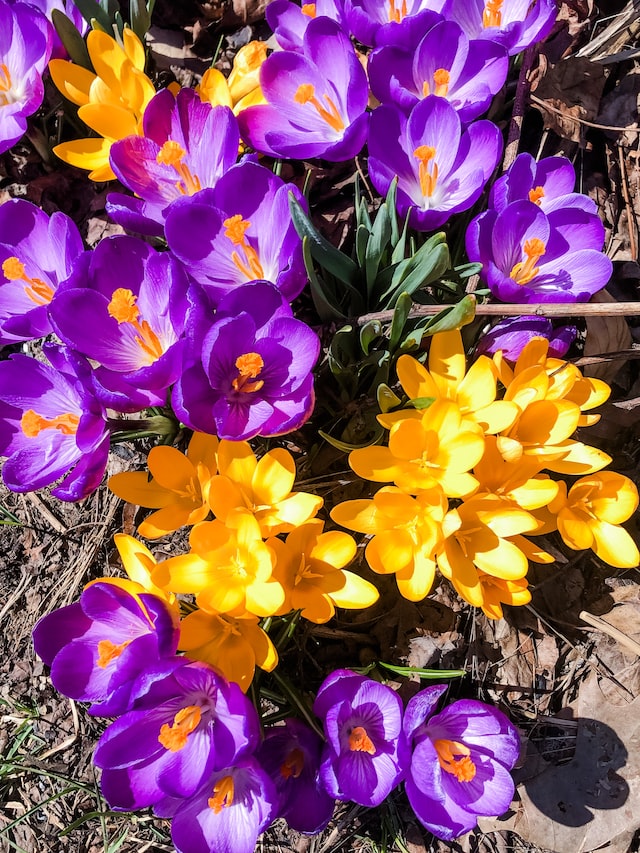
- Taking stock
Before you start gardening, it is important to take stock. Take a look around and see which plants have survived the winter and which have not. But be careful, just because something looks dead doesn’t mean the worst is over. Some plants dry out and curl up to protect themselves from freezing temperatures. Proper watering and plenty of suns can work wonders here.
- Digging up
Once you’ve taken stock of the situation, sorted out broken plants, and made room for new ones, it’s time to start digging. The cold winter days will freeze the soil and make it hard. But the soil needs to be loosened to allow the young plants to grow through. Digging up the soil also brings important nutrients back to the surface and allows the soil to absorb water.
- The first splendour of flowers
Spring bulbs, snowdrops, narcissi, crocuses, tulips – the world of spring is colourful and bright. The tubers of spring bulbs are often planted in autumn, ready to open up to the sun on the first warm days.
If you missed autumn, don’t worry! Tubers or small plants can be planted as early as March. Your garden or balcony will soon be in full bloom.
The first vegetables, such as beetroot and spinach, can now be planted outdoors. Various sowing calendars and your gardener can help you with this.
Plants that have spent the winter indoors should be kept indoors for a few more weeks. They are usually very sensitive to cold and a few freezing days in spring can be very hard on them. Wait and observe the weather conditions.

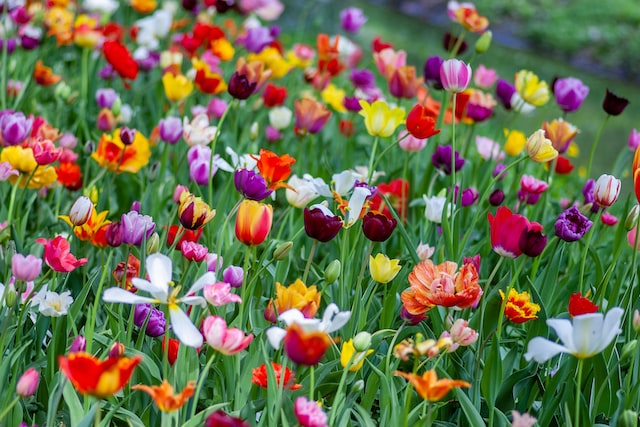
- Pruning plants and trees
Shrubs and trees that have had a good growth spurt over the winter can be pruned back in the spring. There is no need to be squeamish. It is best to prune generously. This will give them an extra boost and a wonderful display of flowers.
It will also allow more light to reach the surrounding plants. They love the first warm rays of sunshine.
Fruit trees are a little more sensitive to frost. It is better to wait and not be too generous with the pruning.
Perennial herbs such as lavender and rosemary can also be cut back in spring.
Special tip: Rose care
Roses are considered the queens of flowers and are quite demanding when it comes to caring. With the first thaw, they come out of hibernation and their frost protection can slowly be removed. The soil around them can now be lightly tilled and weeds removed. With the first warm days, the plants will start to sprout quickly and can now be pruned back. Always prune at an angle just above a bud.
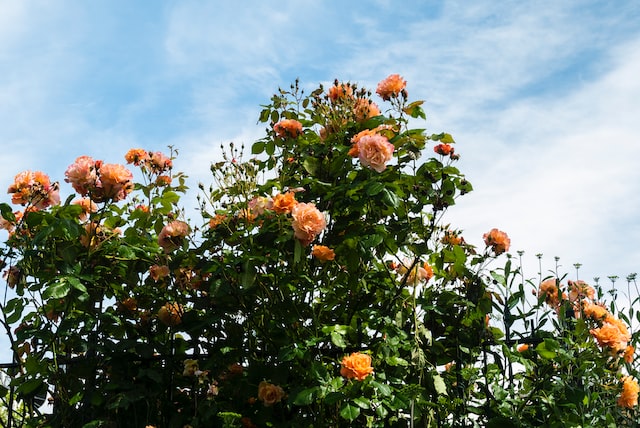
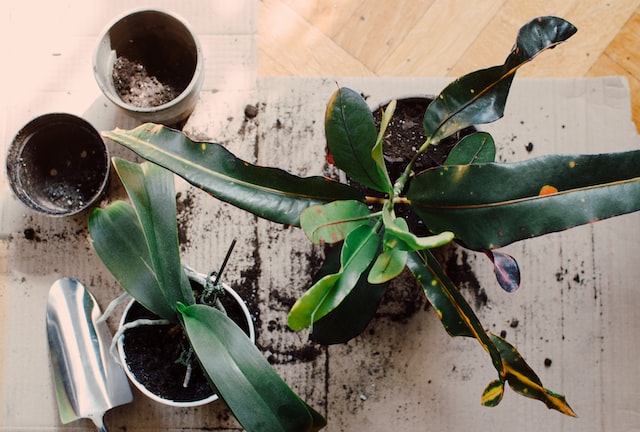
- Repotting
Spring is the perfect time to repot potted and container plants. You can tell if your plants need a bigger pot if their roots are not getting enough room.
You should also replace the pot if it has become calcified or salty (due to over-fertilising). You can tell if this is the case by a white crust on the bottom. It is best to wash the new and old pots with hot water before repotting.
- Mowing the lawn for the first time
When the last frosty days are over, usually in March, the lawn can be mowed for the first time. After that, you should mow the lawn regularly.
If the lawn is brown and there are always some thin patches in between, it is advisable to scarify it. This will tear up the lawn slightly and allow the soil to absorb more oxygen.
- Spring cleaning the garden shed
A garden shed is exposed to all kinds of weather. This can quickly lead to mould growth, especially on very humid days. To avoid a nasty shock when spring arrives, it is a good idea to air the garden shed regularly, even in winter.
Spring cleaning comes with the first warm rays of sunshine. Inspect the garden shed for possible damage and remove cobwebs and dust.

If you have a wooden house, the best thing to do is to sand it down and stain it to make it weatherproof. The same goes for your garden and patio furniture.
These tips will get you, your garden, and your balcony ready for the first warm days. We wish you a beautiful, colourful spring, lots of sunshine, and lots of gardening fun!

